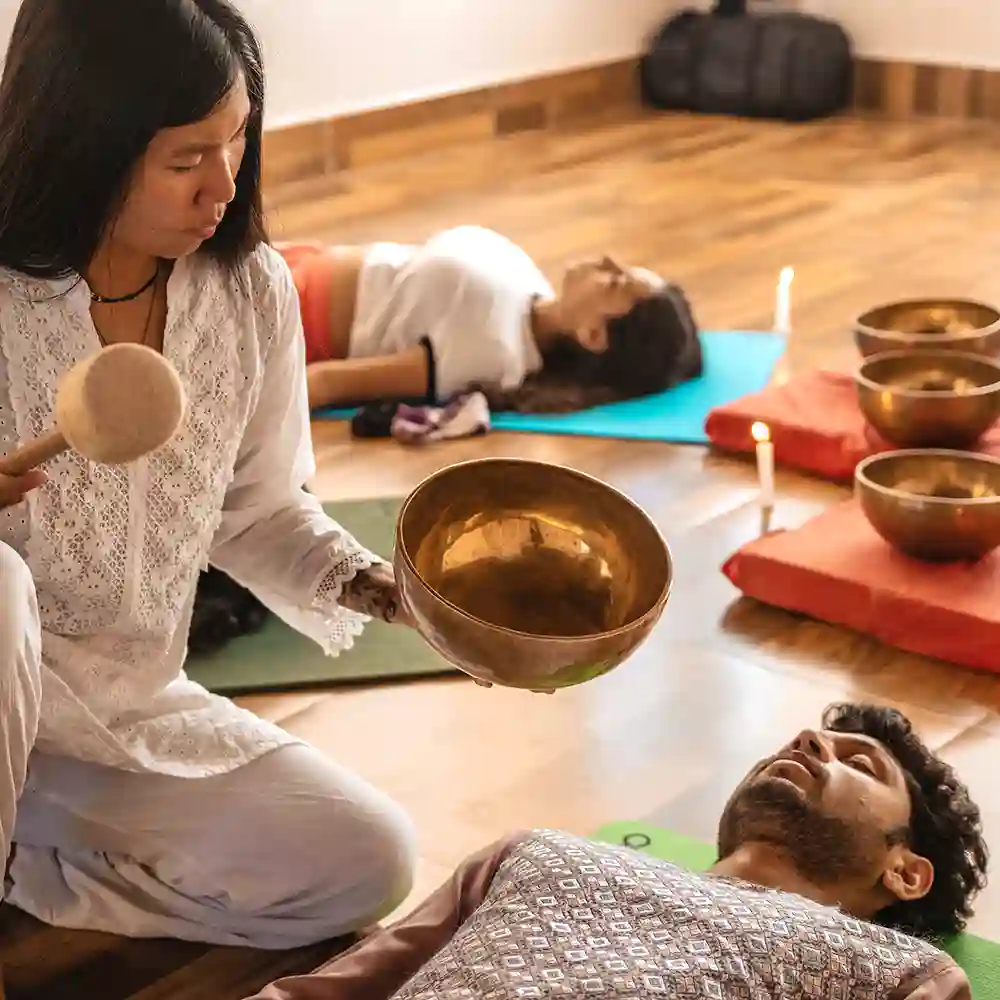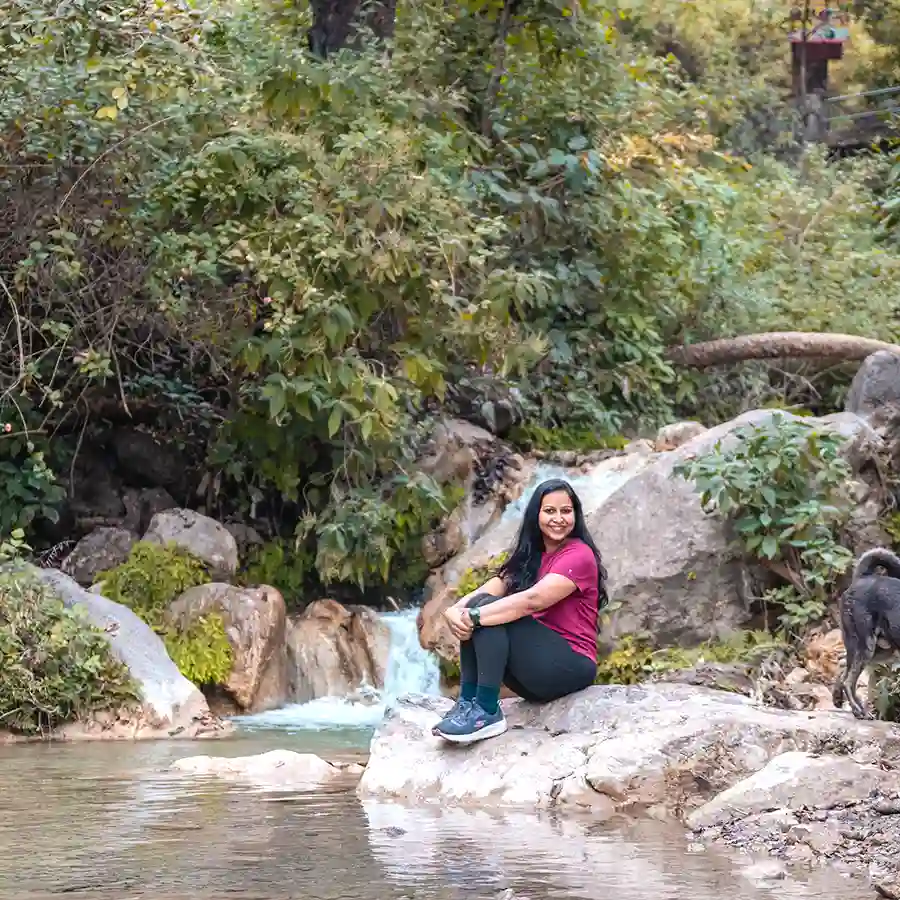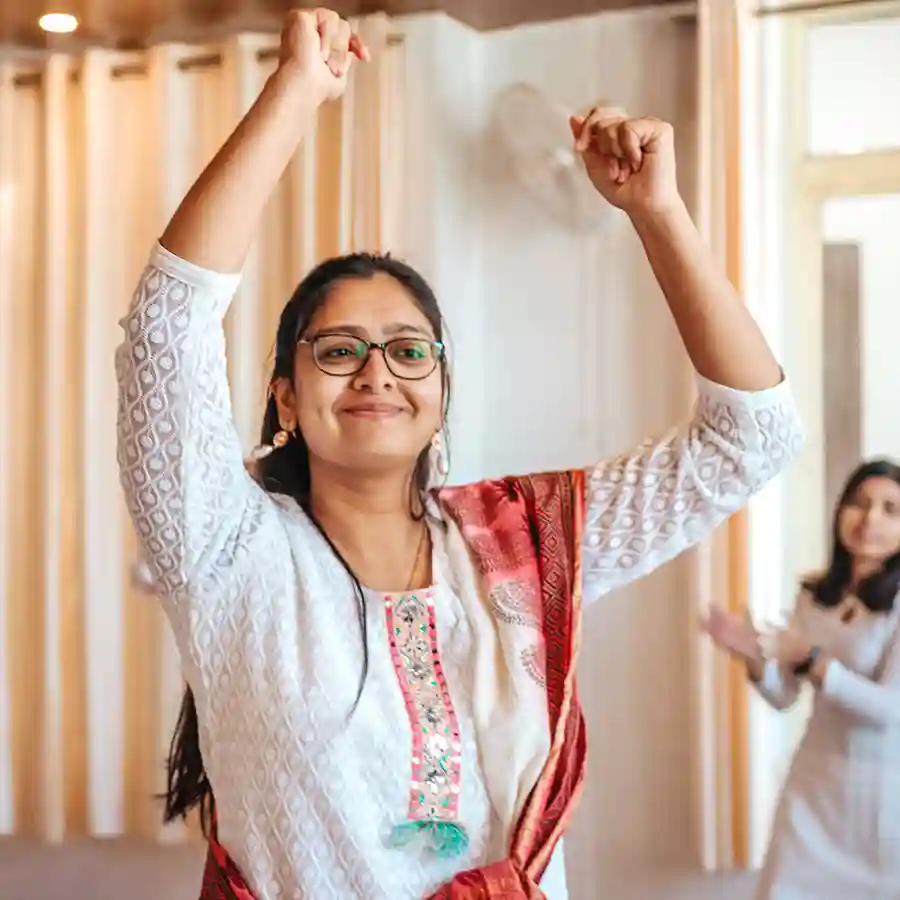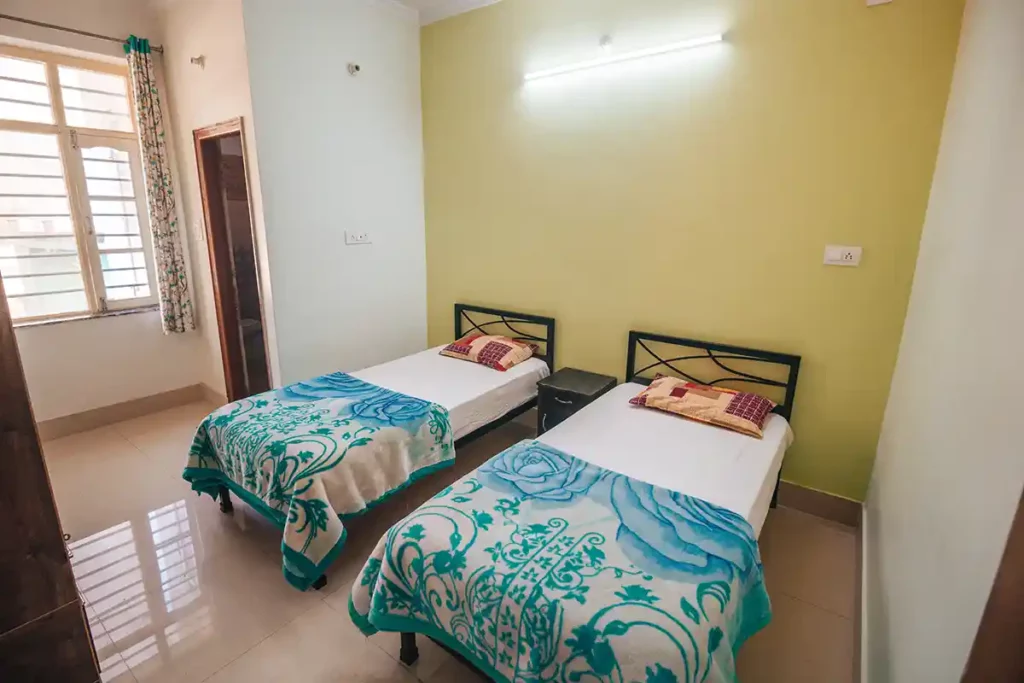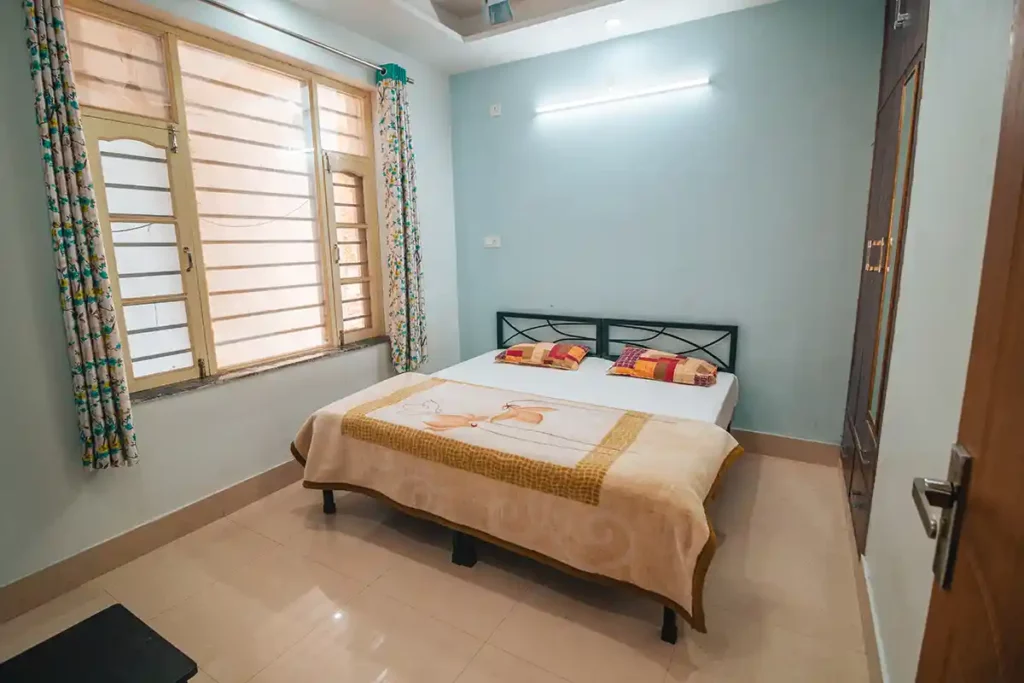
500 Hour Multi Style Yoga Teacher Training Course in Rishikesh India
Price : $2600
500-hour multi-style yoga teacher training course in Rishikesh sounds like an enriching experience! Rishikesh is renowned for its spiritual atmosphere and is often considered the yoga capital of the world. A 500-hour course typically offers a more in-depth exploration of yoga philosophy, anatomy, teaching methodology, and practical sessions compared to a standard 200-hour course. In Rishikesh, you'll likely have the opportunity to immerse yourself in traditional yoga practices, learn from experienced teachers, and connect with like-minded individuals from around the world. The multi-style aspect suggests that you'll be exposed to various yoga styles, such as Hatha, Vinyasa, Ashtanga, Yin, and more, allowing you to develop a well-rounded understanding of yoga. Before enrolling, it's essential to research the specific school or center offering the course to ensure it aligns with your goals, values, and level of experience. Additionally, consider factors such as accommodation, facilities, accreditation, and reviews from past students to make an informed decision. Enjoy your journey of deepening your yoga practice and potentially becoming a certified yoga teacher
holistic approach toward peace and harmony
A holistic approach toward peace and harmony encompasses the idea of addressing all aspects of an individual's well-being—physical, mental, emotional, and spiritual—in order to achieve a state of balance and tranquility. Here are some key components of such an approach: Physical Wellness: This involves maintaining a healthy lifestyle through proper nutrition, regular exercise, adequate sleep, and relaxation techniques. Practices such as yoga, tai chi, and qigong can help improve physical health while also promoting mental and emotional well-being.
Mental Health: Taking care of mental health involves managing stress, cultivating resilience, and fostering positive thinking patterns. Mindfulness meditation, cognitive-behavioral therapy, and other forms of psychotherapy can be valuable tools in this regard. Emotional Well-Being: Recognizing and processing emotions in a healthy way is crucial for inner peace. Practices like journaling, expressive arts therapy, and spending time in nature can help individuals connect with their emotions and develop emotional resilience.
Spiritual Connection: For many people, a sense of spiritual connection or purpose is essential for finding peace and harmony. This can involve exploring one's beliefs, connecting with nature, participating in religious or spiritual practices, or engaging in acts of service and compassion. Interpersonal Relationships: Cultivating healthy relationships and fostering a sense of community can contribute significantly to peace and harmony. Effective communication, empathy, and conflict resolution skills are essential in building and maintaining positive connections with others. Environmental Awareness: Recognizing the interconnectedness of all living beings and the environment is fundamental to a holistic approach toward peace and harmony. Taking care of the planet and promoting sustainability can contribute to a sense of global interconnectedness and well-being.
By addressing these various aspects of well-being in a balanced and integrated manner, individuals can cultivate a deeper sense of peace, harmony, and fulfillment in their lives, both personally and in their interactions with the world around them.Course Overview
The purpose of mantra chanting in yoga is to generate vibrations and connect with the universe. Each mantra is special and rich with spiritual energy.
- Om Asato Maa Sadgamaya (Mantra from Upanishad)
- Tvameva mata ca pita Tvameva (Sloka on gods)
- Om Tryambakam Yajamahe ( Mantra on lord shiva)
- Om sahana vavatu ( Mantra from Upanishad)
- Guru Brahma Guru Vishnu Gurudevo maheshwara ( Guru stotram)
- Yogena Cittasya ( Sloka on sage Patanjali)
- Hare rama, Hare Krishna ( Maha mantra)
Students will gain extensive knowledge on yoga postures and will increase their strength, flexibility and discipline.
Ashtanga Vinyasa Yoga Course Syllabus
- Surya Namaskar A
- Surya Namaskar B Full Primary Series:
- 1. Padangusthasana
- 2. Padahasthasana
- 3. Utthita Trikonasana
- 4. Parivrtta Trikonasana
- 5. Utthita Parsvakonasana
- 6. Parivrtta Parsvakonasana
- 7. Prasarita Padottanasana A B C & D
- 8. Parsvottanasana
- 9. Eka Pada Padangusthasana A B C & D
- 10. Ardha Baddha Padmottanasana
- 11. Utkatasana
- 12. Virabhadrasana A & B
- 13. Dandasana
- 14. Paschimottanasana A B C & D
- 15. Purvattanasana
- 16. Ardha Baddha Padma Uttanasana
- 17. Triang Mukaikapada Pashimottanasana
- 18. Janu Sirsasana A B & C
- 19. Marichyasana A B C & D
- 20. Navasana
- 21. Bhujapidasana
- 22. Kurmasana
- 23. Supta Kurmasana
- 24. Garbha Pindasana
- 25. Kukkutasana
- 26. Baddha Konasana A & B
- 27. Konasana
- 28. Upavishta Konasana
- 29. Supta Konasana
- 30. Supta Padangusthasana A & B
- 31. Ubhaya Padanghusthasana
- 32. Urdhva Mukha Pashimottanasana
- 33. Setu Bandhasana
- 34. Urdhva Dhanurasana
- 35. Salamba Sarvangasana
- 36. Halasana
- 37. Karnapidasana
- 38. Urdhva Pindasana
- 39. Matsyasana
- 40. Urdhva Padmasana
- 41. Sirsasana
- 42. Urdhva Dandasana
- 43. Baddha Padmasana
- 44. Yogimudra
- 45. Uplutih
- 46. Savasana
- 1.Pawanmuktasana series 1
- 2.Pawanmuktasana serie 2
- 3.Pawanmuktasana series 3
- 4.Surya Namaskar ( sun salutation)
- 5.Chandra Namaskar (Moon salutation)
- 6.Tadasana (palm tree pose)
- 7.Triyak tadasana (swaying palm tree pose)
- 8.Trikonasana (triangle pose)
- 9.Parivirtatrikon asana – revolving triangle pose
- 10.Uttkatasana –chair pose
- 11.Virbhdrasana 1 -warrior 1
- 12.Virbhdrasana 2 -warrior 2
- 13.Virbhdrasana 3 -warrior 3
- 14.Ardha Chandrasana- Half moon pose
- 15.Vriksasana – tree pose
- 16.Parvatasana – mountain pose
- 17.Adho mukha svanasana – downward facing dog
- 18.Kati chakrasana – waist rotating pose
- 19.Malasana – squatted yoga pose
- 20.Garudasana – eagle pose
- 21.Baddha Konasana- bound angle pose
- 22.Rajkapoot asana – pegion pose
- 23.Bhujanghasana – cobra pose
- 24.Urdhva mukha svanasana –upward facing dog
- 25.Matsyasana-
- 26.Setu Bhandasana
- 27.Utrasana
- 28.Dhanurasana
- 29.Salabhasana
- 30.Supta Virasana- reclining hero pose
- 31.Virasana –hero pose
- 32.Vajrasana –thunderbolt
- 33.Gomukhasana
- 34.Balasana
- 35.Dandasana
- 36.Ardha Matsyendrasana
Week 1
- Introduction of Pranayama , Benefits of pranayama , General guidelines
- Clavicular , Thorocic and Diaphragmatic Breathing (Yogic Breathing)
- Ujjayi
- Bhastrika
- Kapalbhati
- Nadi – Sodhana
- Bhramari
- Surya – Bhedi & Chandra – Bhedi
- Sheetali & Sheetkari
Week 2
Sitting postures for pranayama sadhana-
The practice of Mudra hand gestures is an ancient facet of yoga. Performing gestures effects the energy flow of the body and can change a person's spiritual and mental characteristics.
- Jnana mudra
- Chin mudra
- Yoni mudra
- Bhairava mudra
- Shambhavi mudra
- Nasikagra
- Khechari
The practice of Bandhas expands the lung capacity and breathing capabilities during yoga. It also strengthens the entire body from the inside out.
- Preparation
- Uddiyana
- Jalandhar
- Mula & Maha Bandha Teaching
- Teaching
- Doubts
Meditation is a systematic practice that promotes physical, mental and emotional tranquility with the purpose of reaching Samadhi (self-realization).
- Introduction to Meditation
- Breathing Awareness Meditation
- Om / Mantra Meditation
- Trataka
- Dynamic meditation
- Tips for developing concertation
- Silence Practice
- Ajapa japa
- Antar mouna
When a yoga practitioner moves through the various internal states of Yoga Nidra, a profound experience of relaxation occurs. This is called "Turiya," a sensation of pure bliss.
- Basic Relaxation
- Tension Relaxation
- Full Body Relaxation
Yogic cleansing exercises are important to learn how to incorporate your breath and meditate properly during physical aspects of yoga. It also removes the blockages in the energy channels.
- Jalaneti Satkarma (Nasal cleansing with salty water)
- Rubber neti (Nasal cleansing with a rubber string)
- Agnisar Kriya
Proper understanding of the physical body will help to prevent injury before, during and after practice. There are two kinds of yoga anatomy: physical and spiritual. Understanding both types is needed.
- Digestive System
- Respiratory System
- Circulatory System
- Nervous System
- Endocrine System
- Organs
- Bodily systems
- Nadis
- Chakras
- Muscular System
- Skeletal Sytem
- Muscle Functions according
to Joint Movements - Breathing
- Inversions
- Svasana
Guidelines in Studying Asana Anatomy
Anatomy of:
Yoga Philosophy is the foundation of our yoga practice and is the key to earn yogic strength. Through the path of Vedanta Philosophy, you will establish a solid, well-rounded yoga practice.
Patanjali yoga sutras-
- Introduction to the Himalayan Traditiof of Yoga
- Introduction to the different indian philosophy
- History of Yoga
- Yoga Sutra of Patanjali
- Types of yoga
- Eight limbs of yoga
- Yamas and Niyamas(Ethics of yoga)
- Philosophy of Asana
- Concentration and its power
Week 1
Week 2
- 4 aspects of mind
- How to controld the mind
- Samadhi and the goal of yoga
- Introduction to Bhagawat Geeta
- Chakras
- Kundalini
- Science of Karma
- Indian culture and Spirituality
Week 3
Week 4
Students will take turns practicing their teaching skills by performing in front of their peers and teachers.
- Demonstration
- Alignment
- Instructions
A yoga teacher should efficiently perform the practical applications of class planning and preparation. At Bliss Yoga School, our students will learn how to create a positive and peaceful class environment for an enjoyable and transformative experience.
- 1- Positive & conscious communication.
- 2- Friendship and trust.
- 3- Time management
- 4- Qualities of a teacher
- 5- Principles of demonstrating, observation, assisting, correcting.
- 6- Use of voice in class
- 7- Mental & emotional preparation for teaching.
- 8- Class preparation
- 9- Step by step class structure planning.
Students will take turns practicing their teaching skills by performing in front of their peers and teachers.
- Written Test
- Oral Test
- Attendance
- Performance
- Behavior




